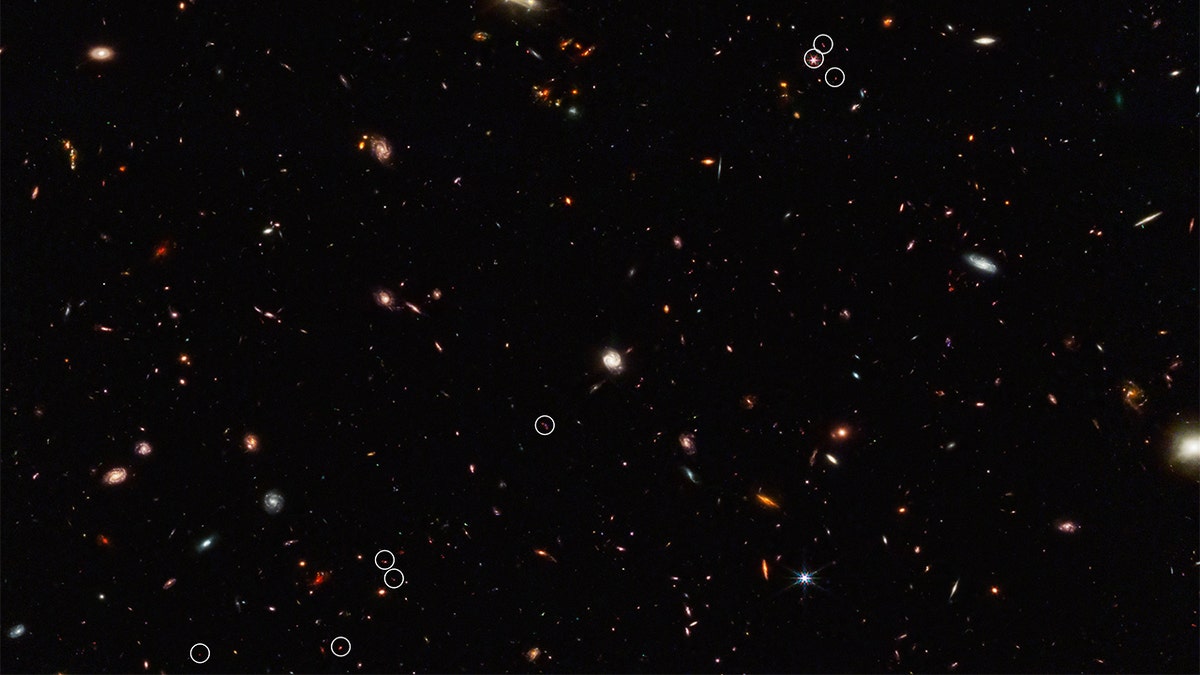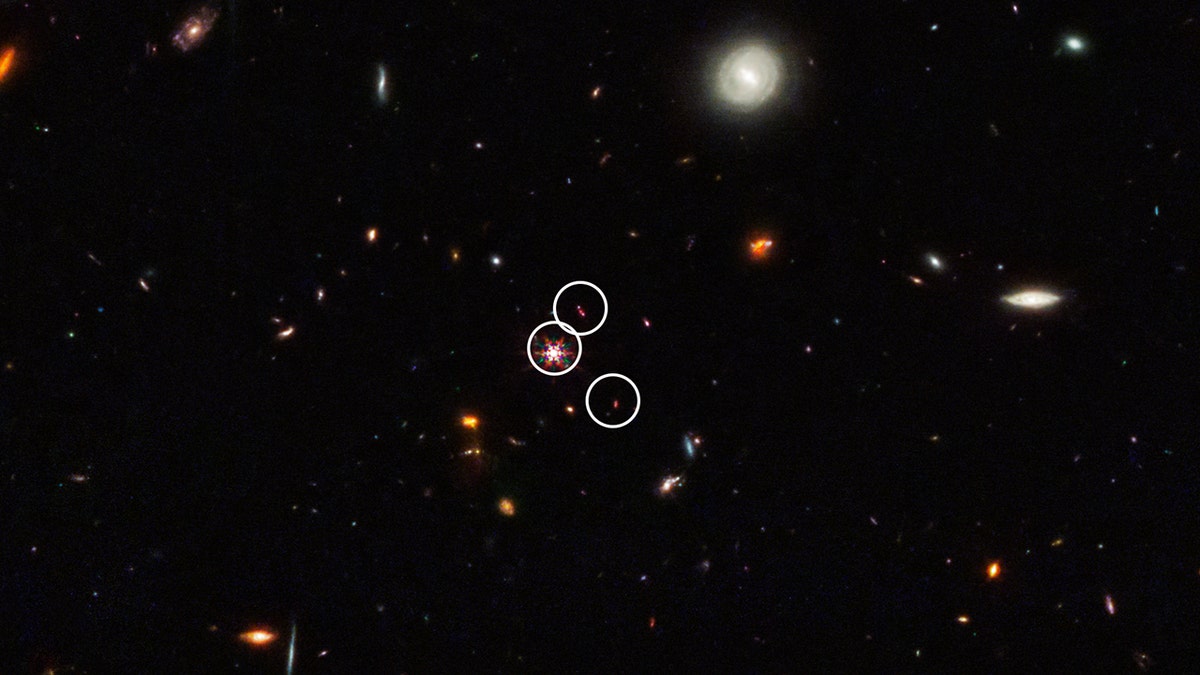NASA's James Webb Space Telescope has provided groundbreaking images of a string of 10 galaxies linked by a cosmic filament, dating back to just 830 million years after the Big Bang. This discovery sheds light on the early formation of the universe's large-scale structure.
NASA explains that galaxies tend to cluster together, forming vast interconnected filaments separated by enormous voids. Gravity has drawn this recently discovered cosmic web together over time, making its structure more pronounced.

Webb's Near-Infrared Camera captured a deep galaxy field image, revealing eight circled galaxies aligned with each other. Some circles encompass multiple galaxies. The filament spans 3 million light-years and is anchored by a quasar—a galaxy harboring a supermassive black hole at its core.
Astronomers studying this galactic arrangement believe the filament will eventually evolve into a galaxy cluster similar to the Coma Cluster. Xiaohui Fan of the University of Arizona expressed surprise at the filament's length and narrowness, exceeding expectations.
This discovery was made by the ASPIRE project, which investigates the cosmic environments of the earliest black holes. ASPIRE aims to study 25 quasars from the first billion years after the Big Bang (approximately 13.8 billion years ago).

A NASA image highlights eight circled galaxies in a straight line, with the anchor point in the center of the three circles on the right. A bright quasar resides in the middle circle. The ASPIRE study also examines the characteristics of eight quasars.
NASA confirmed that the black holes within these quasars range from 600 million to 2 billion times the mass of our sun and existed less than a billion years after the Big Bang. Feige Wang, the principal investigator of ASPIRE, explained that forming such supermassive black holes so quickly requires a massive "seed" black hole to initiate the growth process. Even starting with a mass equivalent to 1,000 suns, the black hole would need to grow a million times larger at its maximum rate.
Jinyi Yang, who leads the black hole study with ASPIRE, emphasized that these observations provide crucial insights into black hole formation. The research has revealed that these black holes reside in massive young galaxies, which supply the fuel for their growth.








